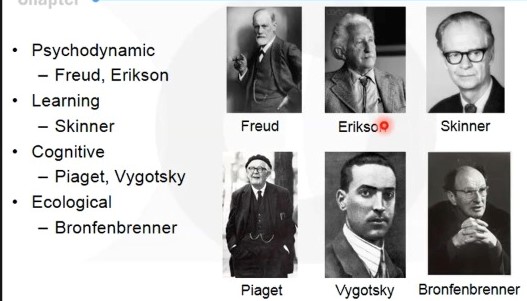Do You Or Your Loved Ones Have Symptoms Of Stuttering Or Speech Pathology?
Stuttering disorder has been included in the DSM-IV Classification, and includes certain criteria for the disorder to be classified as stuttering disorder. Only if the individual or child is able to meet with these criteria, would he/she be diagnosed as stuttering disorder. There is an important note that the disorder not be considered as a mental disorder, but should be included as a 'speech disorder' or a 'developmental disorder'. Stuttering is given the DSM code 307.0 and is usually coded as an Axis III disorder wherein speech-motor disorders are included (Karlen, 2006).
"According to the DSM-IV classification Stuttering:-
A. A disturbance in the normal fluency and time patterning of speech that is inappropriate for the
Individual's age. This disturbance is characterized by frequent:-
a. sounds or syllables repetitions or prolongations
b. Various other types of speech dysfluencies interjections,
c. broken words,
d. audible or silent blocking,
e. circumlocutions,
f. words produced with an excess of physical tension,
g. and monosyllabic whole word repetitions.
B. The disturbance in fluency interferes with academic or occupational achievement or with social communication.
C. If a speech-motor or sensory deficit is present, the speech difficulties are in excess of those usually associated with these problems" (Quoted from DSM-IV, 1994)
Characteristics
The cause of the disorder is still not known though scientists feel that a combination of factors may be responsible including abnormal speech development, inherited brain anomalies, stroke or brain infarction, or certain mental health problems. Usually when development issues are involved, the child may outgrow the problem. However, if the problem is related to a genetic brain anomaly or brain injury (such as brain infarction or trauma), then the disorder tends to persist even into adulthood. The risk factors for developing the disorder include delayed childhood development, family history of such a disorder, or unnecessary stressful situations and unrealistic parental expectations (Mayo Clinic, 2012).
The signs and symptoms of stuttering include difficulty in starting or continuing a sentence, word or phrase, repetitions of a word or syllable, tension and tightness of the lips, face and upper body, tremors of the jaw and lip, and blinking of eyes. People who stutter have difficulties making public speeches (Mayo Clinic, 2012).
Diagnosis
The diagnosis of stuttering disorder is made on the presence of certain signs which are mentioned under the DSM-IV-TR. The three cardinal signs include a disturbance of normal speech and fluency, disturbances that affects occupation, academic or social performance, and a speech-motor or sensory deficit is present. There is frequent repetitions of words, sentence, phrase or syllable, the words appear broken up, and there may be silent blockings or broken words heard. Assessments may be conducted by the speech therapist to determine the developmental course of the disease, the types and frequencies of abnormalities (disfluences), and speech and language disabilities experienced by the child (Yaruss, 2012).
The evaluation by the pathologist is conducted over 3 hours and includes detailed interview with the parent, observation of the child speaking, and direct speech-language testing. Some of the stuttering tests conducted are stuttering prediction and stuttering severity instruments. Speech therapists would take into consideration psychosocial factors, psycholinguistic factors and physiological factors that may be involved. The speech problem may not be directly, limited to speech fluency but may be involved with the phonological development, language development and word finding abilities of the child. The pathologist would also like to rule out underlying disorders such Tourette's syndrome which could result in speech problems (Yaruss, 2012).
Treatment
The treatment required would depend on the nature of the problem, the severity of the problem and whether the disorder is associated with an underlying brain or systemic disorder. Treatment is usually recommended in 50% of the children, and in 43% following a detailed evaluation, the treatment plan can be charted out. There are different approaches for treatment of the disorder. Treatment is usually done by the speech and language therapist in coordination with the child psychologist. Some of the therapies being suggested for stuttering include fluency-shaping therapy, electronic fluency devices, interpersonal therapy, anti-stuttering drugs, support group therapy, and psychotherapy, or a combination (Mayo Clinic, 2012).
Fluency shaping therapy includes breathing in controlled manner in order to control phonation and articulation of the jaws, tongue and lips (Mayo Clinic, 2012). Interpersonal therapy is one of the therapies that can be used for stuttering, as each client is given unique treatment and value. It consists of strategic therapies along with interactional and systemic therapies. It can be conducted only following of the examination of psychological and interpersonal issues involved (Labuschagne, 2004). Some of the medications that can be used in the treatment of stuttering include antidepressants, anticonvulsants, benzodiazepines and dopamine antagonists. There was a slight but noticeable reduction in stuttering following therapy with drugs. Support groups can be used along with pharmaceutical, interpersonal and psychotherapy to help reduce the symptoms. There is also evidence that psychoanalysis provides some amount of relief for stuttering (Mayo Clinic, 2012).
The outcome of stuttering is usually good as it is found that about 2-3rds of the school children who develop stuttering in their childhood are able to recover. Remaining 10% are able to become normal in their teenage-hood and only a small portion actually has the disorder persisting in adulthood (Mayo Clinic, 2012).



0 Comments
Posting Komentar